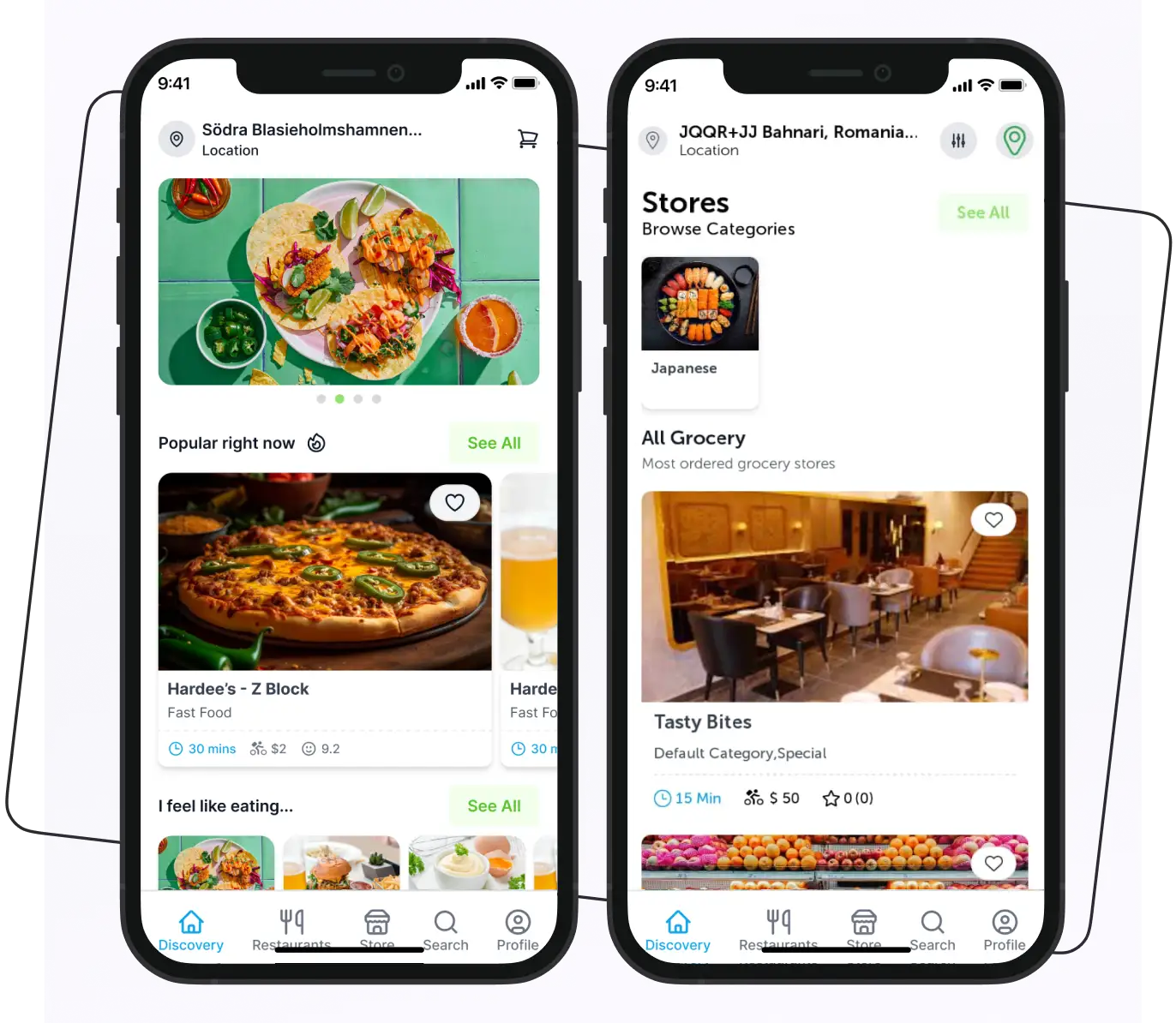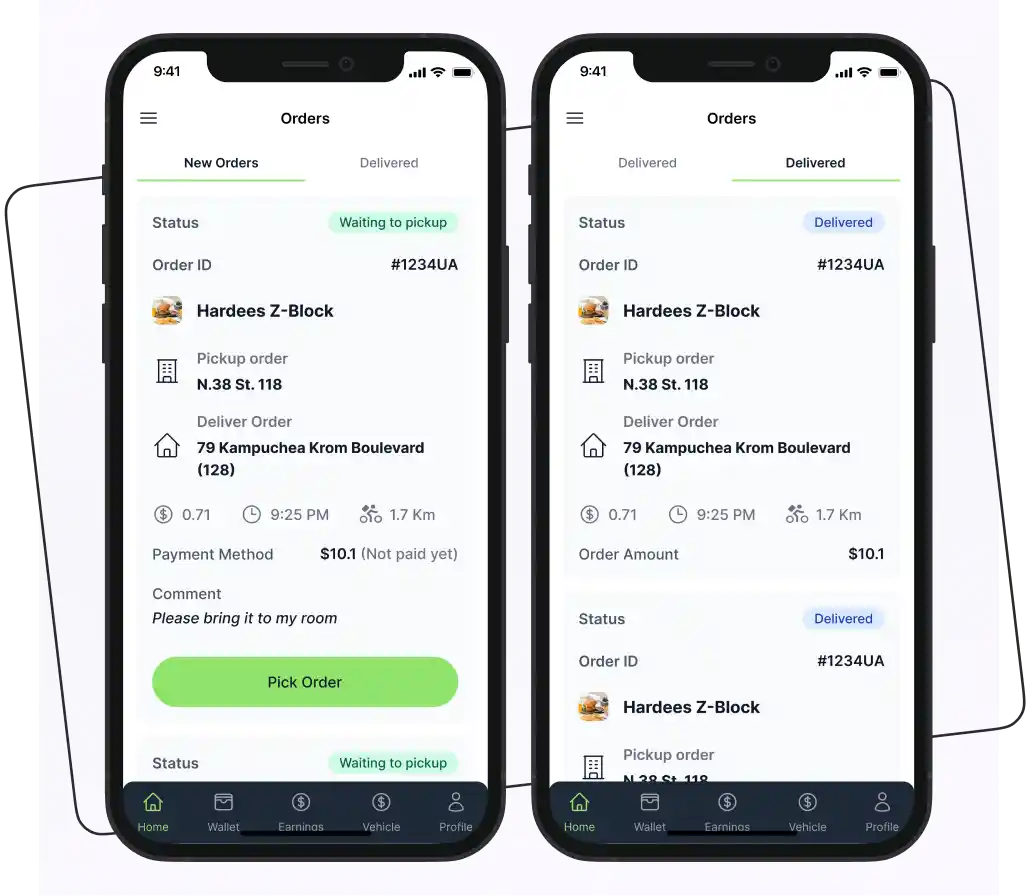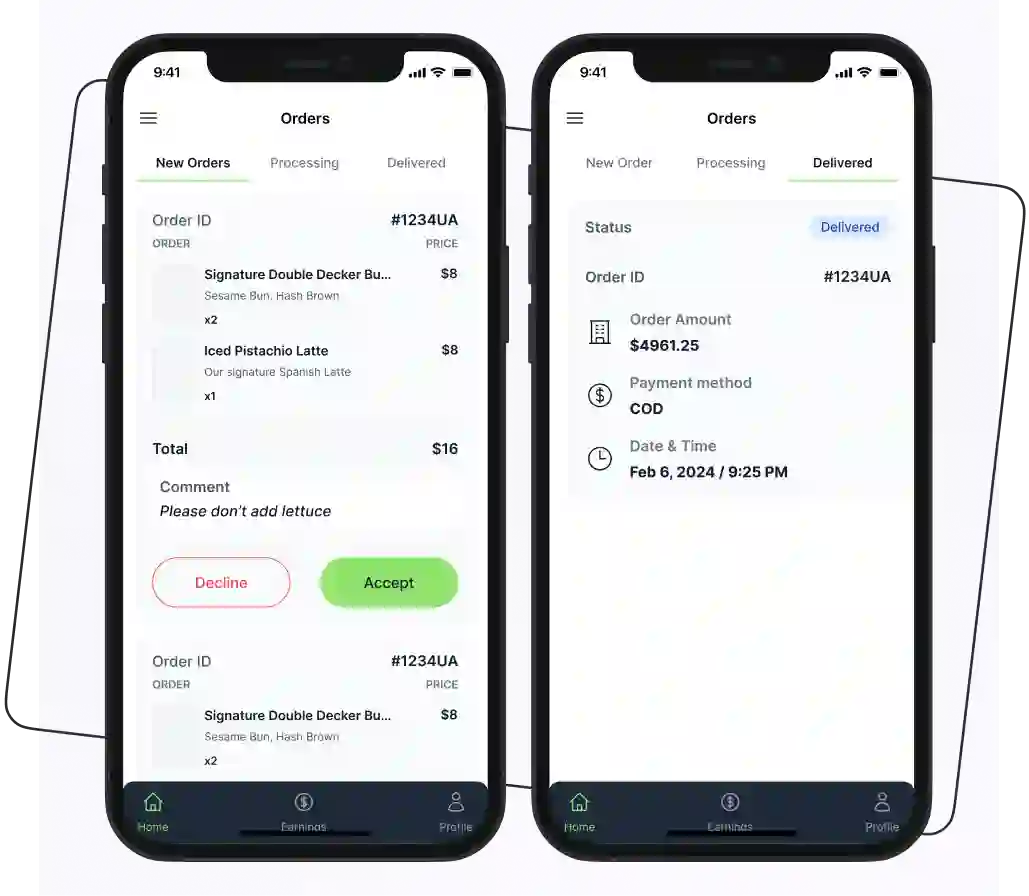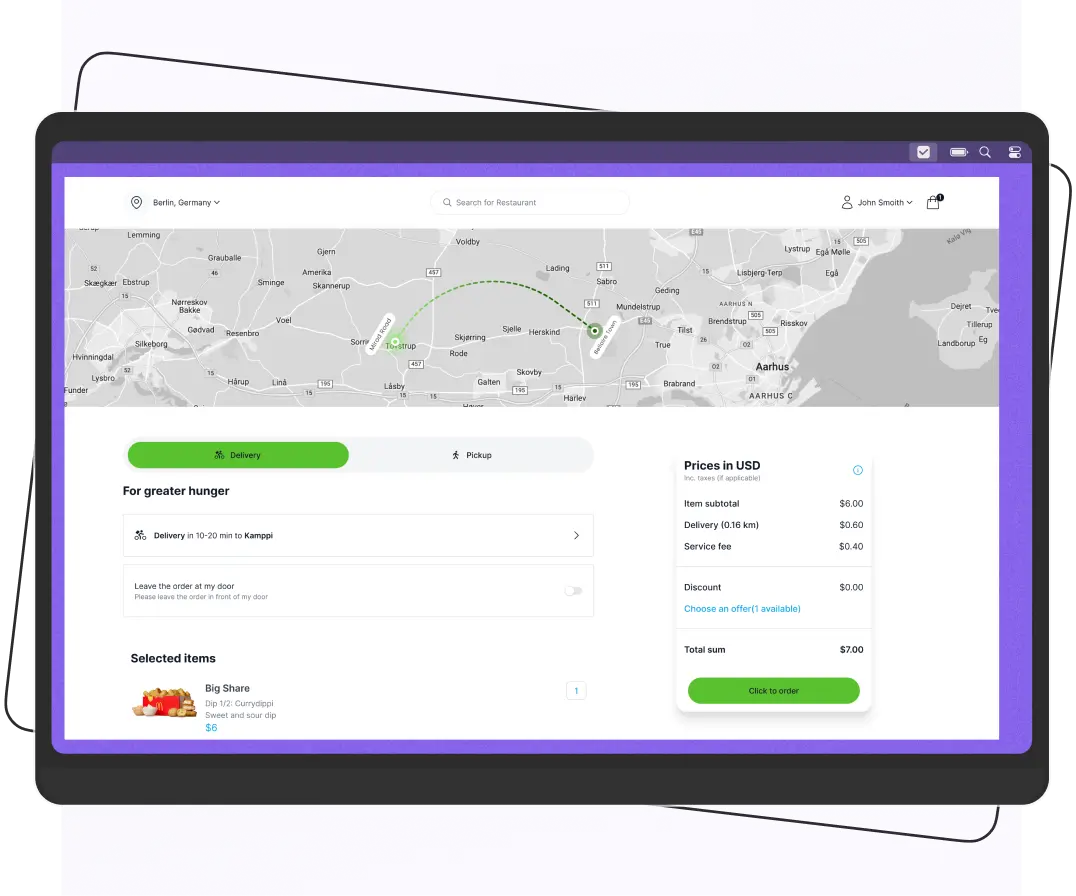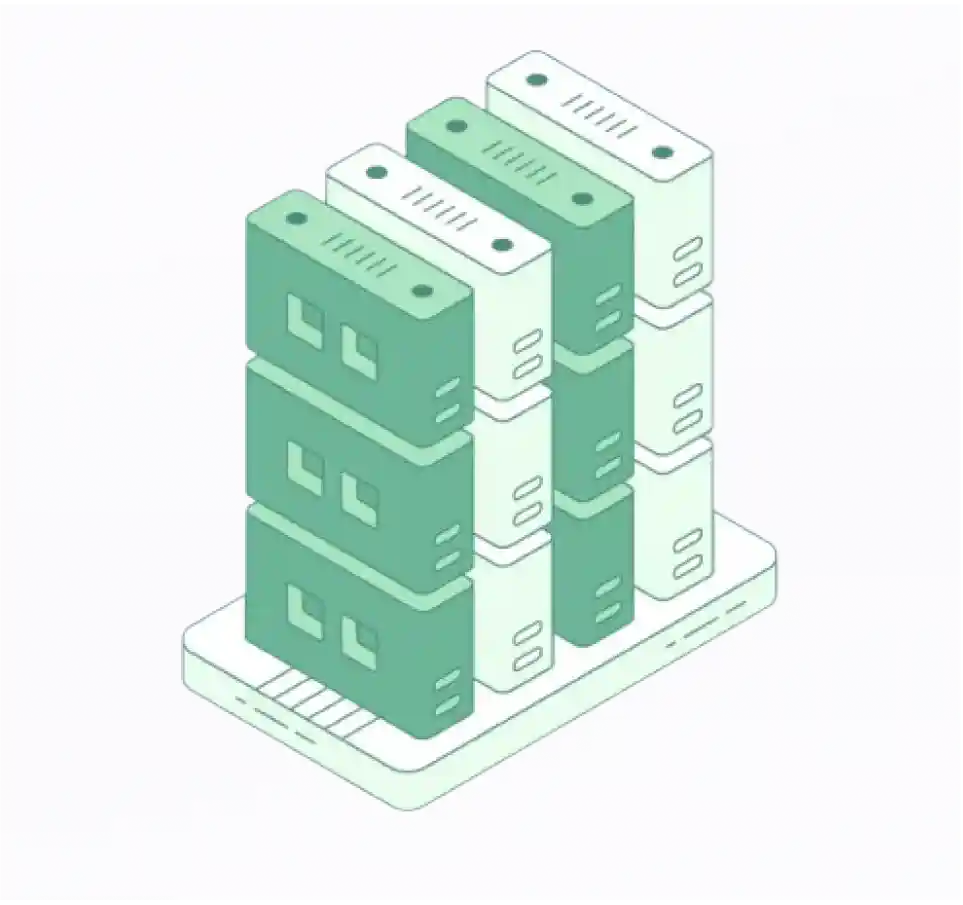
You’ve probably used Talabat to order food, groceries, or even coffee, but have you ever wondered how it makes money? It’s more than just an app that connects you to restaurants. Talabat has a smart business model working behind the scenes, helping it grow fast and stay ahead of the competition.
For Q1 2025, Talabat revenue increased by 34% to $846 million.
If you’re thinking about building a food delivery app or just curious about how these apps make profits, you’re in the right place!
In this blog, we’ll explain how Talabat works, how it earns money, and what makes its business model so successful.
Supercharge your deliveries with Enatega.
Get A QuoteWhat is Talabat?
| Quick Look Into Talabat | |
| Founder | Abdulaziz Al Loughani |
| Meaning of ‘Talabat’ | “Orders” or “Requests” in Arabic |
| Parent Company | Delivery Hero (since 2016) |
| Available In | UAE, Kuwait, Saudi Arabia, Bahrain, Oman, Qatar, Jordan, Egypt, Iraq |
| Services Offered | Food delivery, groceries (Talabat Mart), pharmacy, flowers, pet supplies |
| Subscription Service | Talabat Pro (offers free delivery and exclusive deals) |
| Partner Restaurants | 65,000+ |
| Delivery Riders | Around 119,000 across the region |
| IPO | Listed on the Dubai Financial Market in 2024 |
Talabat is a popular online food and grocery delivery service that operates across the Middle East and North Africa. Originally founded in Kuwait in 2004, it quickly grew into one of the region’s go-to platforms for ordering meals, groceries, and more.
Over the years, it expanded its services to several countries and was eventually acquired by Delivery Hero in 2016. Whether you’re craving fast food, need groceries delivered in under an hour, or want to send flowers to someone, Talabat makes it easy and convenient.
How Talabat Works?
Here is the workflow of Talabat.

- Open the Talabat app
You have to download the app from the App Store or Google Play.
- Enter your location
This helps the app show you restaurants and stores that deliver to your area.
- Browse and choose
Scroll through the options, including restaurants, groceries, flowers, and medicine.
- Add to cart and customize
Pick your items, choose any extras (like cheese or sauce), and add them to your cart.
- Place your order
Select a payment method: credit card, cash on delivery, or Talabat wallet, and confirm.
- Track your order
You can see when the restaurant accepts it, when it’s being prepared, and when the rider is on the way.
- Receive your order
The rider delivers it to your doorstep. That’s it, food delivered, no hassle.
Talabat Business Model – How Talabat Makes Money?
Talabat works as a delivery and logistics platform that connects customers with restaurants, grocery stores, and other vendors. It doesn’t cook food or stock groceries itself; instead, it acts as the middleman and earns money by helping other businesses deliver to customers quickly and efficiently.
Talabat Revenue Streams
Here are the revenue streams that Talabat uses to make money.

1. Commission from Restaurants
Talabat charges restaurants a commission fee for every order placed through the app. This is their main revenue stream, usually ranging from 15% to 35%. The more orders processed, the more revenue Talabat generates from commissions.
| Pros | Cons |
| Stable and consistent revenue stream | High commission rates |
| Scales easily with order volume | Creates dependency on restaurant partners for revenue |
| No need to manage inventory or food |
2. Delivery Fees
Customers pay a delivery fee on each order, which varies depending on distance, location, and time. This helps cover rider costs and boosts per-order profit. Some of it goes to the delivery partner, while Talabat keeps a portion.
| Pros | Cons |
| Adds extra income per order | High delivery charges |
| Helps cover delivery partner costs like fuel, time, and logistics. | Fee fluctuations based on distance or peak hours may frustrate users. |
| Easy to implement and adjust depending on location or demand. |
3. Talabat Pro (Subscription Service)
Talabat Pro is a paid monthly membership that offers users free delivery and exclusive discounts. It provides steady, recurring revenue and encourages users to order more frequently from eligible restaurants.
| Pros | Cons |
| Generates recurring monthly revenue from subscribers. | Lower profit margin per order when discounts are applied. |
| Improves customer experience with free delivery and exclusive deals. | Restaurants may earn less per order due to discounts offered. |
4. Sponsored Listings and Advertising
Restaurants can pay Talabat for better visibility through featured placements, ads, or homepage banners. This helps restaurants gain more orders while generating extra income for Talabat.
| Pros | Cons |
| An additional revenue stream without involving logistics or delivery. | It may create unfair competition for smaller, non-paying restaurants. |
| Gives restaurants more visibility, helping them grow faster. |
5. Service Fees
Talabat may charge a small service fee during peak hours or for large orders. It’s a way to increase revenue without directly affecting the restaurant or vendor.
| Pros | Cons |
| Helps cover platform costs like payment processing and support. | It can feel like a hidden charge, leading to negative customer feedback. |
| Flexible pricing based on demand, location, or order size. | Not always transparent, which may harm trust and app satisfaction. |
Talabat Business Model Canvas

Challenges Faced by the Talabat Business Model
Look at the table below and understand the challenges faced by Talabat.
| Challenge | Description |
| Intense Competition | The food delivery market has numerous players, including local and international brands. This intense competition makes it vital for Talabat to differentiate itself through unique offerings and superior service. |
| Logistics and Delivery | Managing a fleet for timely delivery involves complex logistics, including route optimization and traffic management. Delays can lead to customer dissatisfaction, making efficient logistics critical for maintaining a good reputation. |
| Customer Retention | With so many options available, keeping customers engaged is essential. Talabat must continually offer promotions, loyalty programs, and personalized experiences to build brand loyalty. |
| Quality Control | Ensuring food safety and quality can be challenging, especially when dealing with different restaurants. Talabat must implement stringent quality checks to maintain high standards, as any lapse can harm its reputation. |
| Supply Chain Issues | Disruptions in the supply chain can lead to delays in food availability and affect delivery times. Talabat must develop contingency plans to mitigate risks and ensure consistent service levels. |
Talabat vs. Jahez Business Model
The table below shows the comparison of the business models of Talabat and Jahez.
| Aspect | Talabat | Jahez |
| Founded | 2004 | 2016 |
| Headquarters | Kuwait | Saudi Arabia |
| Service Type | Online food delivery | Online food delivery |
| Geographic Focus | Middle East (Kuwait, UAE, Bahrain, etc.) | Primarily Saudi Arabia |
| Business Model | Marketplace model connecting restaurants with users | Direct delivery model with its fleet |
| Revenue Streams | Delivery fees, commissions from restaurants | Delivery fees, service fees from restaurants |
| Partnerships | Collaborates with a wide range of restaurants | Partners primarily with local restaurants |
| Market Position | Leading player in multiple Middle Eastern markets | Strong presence in Saudi Arabia |
Talabat vs. Deliveroo Business Model
Check the table below and understand the difference between a Talabat and Deliveroo business model.
| Aspect | Talabat | Deliveroo |
| Founded | 2004 | 2013 |
| Headquarters | Kuwait | United Kingdom |
| Service Type | Online food delivery | Online food delivery |
| Geographic Focus | Middle East (Kuwait, UAE, Bahrain, etc.) | Primarily UK, expanding to Europe and the Middle East |
| Business Model | Marketplace model connecting restaurants with users | A hybrid model with both marketplace and logistics |
| Revenue Streams | Delivery fees, commissions from restaurants | Delivery fees, commissions, subscription services |
| Partnerships | Collaborates with a wide range of restaurants | Partners with a variety of restaurants, including exclusive ones |
| Market Position | Leading player in multiple Middle Eastern markets | Strong presence in the UK and competitive in Europe |
FAQs
1. How much percentage does Talabat take?
Talabat charges restaurants a commission fee ranging from 15% to 30% per order. But it depends on various factors such as the partnership agreement and the restaurant’s location.
2. What is the most ordered food on Talabat?
The most ordered food on Talabat often includes pizza, burgers, and traditional Middle Eastern dishes like shawarma and kebabs. Popularity can vary by region and season.
3. What is the benefit of Talabat?
Talabat offers several benefits, including:
- Convenience
- Wide variety
- Promotions and discounts
- Real-time order tracking for better visibility
- User-friendly app
4. Who are Talabat’s competitors?
Talabat’s main competitors include:
- Zomato
- Deliveroo
- Uber Eats
- Foodpanda
5. What are the payment methods for Talabat?
Talabat offers several payment methods, including:
- Credit/debit cards
- Cash on delivery
- Digital wallets
- Talabat wallet
Supercharge your deliveries with Enatega.
Get A QuoteConclusion
Talabat isn’t just about delivering food, it’s about delivering smart business. With a mix of commissions, delivery fees, ads, and subscriptions, Talabat has built a model that keeps both customers and restaurants coming back.
It’s a great example of how the right mix of tech and strategy can turn a simple idea into a big success. Whether you’re a foodie, a startup dreamer, or just curious how apps make money, Talabat shows how it’s done.
So, if you're inspired to build your food delivery app like Talabat , Enatega is here to help. We're a leading food delivery app development company, trusted by several companies.
Book a free demo , discuss your needs, and get a fully customizable solution built just for you.













 IOS
IOS Android
Android Web
Web